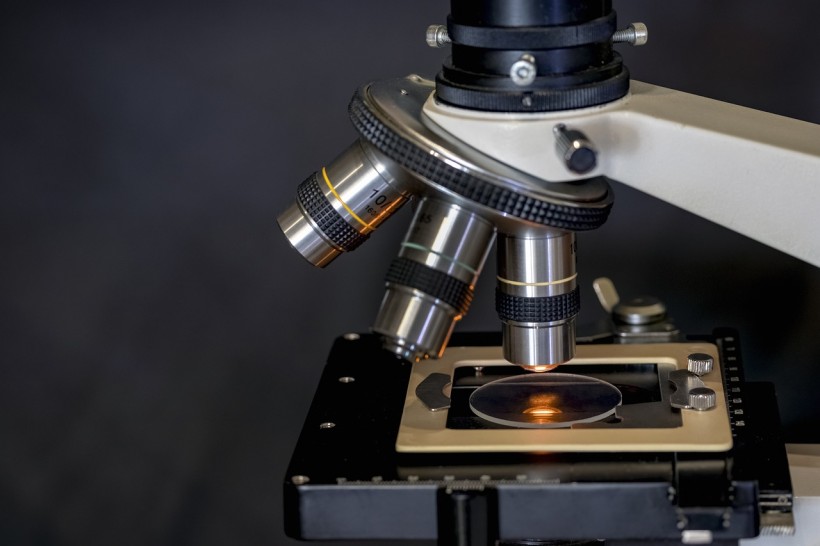
The research community studying somnology could benefit from understanding the role of peptides in the sleep cycle. Studies suggest that peptides may interact with the different stages of sleep and may improve sleep quality by stimulating the secretion of hormones like melatonin. This extensive study will address important concerns for scientists interested in the role of peptides in sleep physiology and sleep disorders.
DSIP Peptide
Endogenously created from test animals after activation of certain brain areas is delta sleep-inducing peptide (DSIP). DSIP-promoted delta sleep, also called slow-wave sleep (SWS), is aided by physical recovery and is marked by delta activity in electroencephalograms.
Some studies have suggested that this peptide may improve memory processing and REM sleep. As a result, DSIP has been hypothesized to improve sleep quality and encourage more restorative sleep. Experimental studies using DSIP have suggested encouraging results in various sleep disorders, including narcolepsy, addiction withdrawal, and regulating sleep patterns.
Research Peptides: What are they?
A peptide bond connects two amino acid building blocks, and a peptide is a little protein with a relatively small size. The standard definition of a protein is a "peptide" when its length is 40 or 50 residues and it contains exactly one polypeptide chain. A peptide's main structure is typically linear. Still, it may also be cyclic (when an amide bond links the N and C termini after the amino acid sequence is translated) or branching (when residues in the R chains include amino groups or carboxyl groups).
The sequence of amino acids determines a peptide's biological characteristics, regardless of its content. Pentapeptides can form secondary and tertiary structures like bigger proteins, including alpha helices. Due to its single-chain nature, a peptide can't possess a quaternary structure. Among the many theorized important functions that peptides may perform in the organism are:
- Creating and secreting hormones
- The development of new tissues
- Supporting defenses against pathogens
- Message exchange in cells
- Recovery in damaged tissues
Research Peptides and Sleep
Research suggests that two primary pathways may be involved in the action of peptides for sleep:
- Initiating and maintaining sleep via promoting the secretion of the hormone melatonin.
- Interacting with the stages of sleep, especially stage 3, also known as deep sleep, is considered crucial for consolidating memories and recovering tissues while asleep.
A study conducted on rats indicated that DSIP may decrease sleep latency and increase the amount of time spent in stage-3 sleep, also known as SWS. This stage of sleep is known as non-rapid eye movement (NREM), and it is the most profound. During SWS, activities like tissue regeneration and growth hormone production are at their peak, often linked to recovery and development. Many types of memory consolidation are believed to take place during delta-wave sleep, including declarative memory.
Korkushko et al. (2014) note that peptides like the bioregulator Epithalon (AEDG peptide) might have the potential to restore the sleep-wake cycle by increasing melatonin synthesis, which in turn may reduce sleep latency. The pineal gland secretes the hormone melatonin, which greatly influences the regulation of sleep-wake cycles. This is why it's often called the "sleep hormone." Melatonin regulates temperature and blood pressure, among other physiological processes, and possesses antioxidant characteristics.
Experimental studies have asserted that peptides may improve sleep quality.
In a research study aimed at evaluating the peptide Epithalon, Korkushko et al. examined the impact of Epithalon compared to a control group in test animals. Compared to serum melatonin levels before presentation, the experiment suggested that Epithalon may enhance nighttime melatonin levels by 145%. However, the melatonin levels before and after the placebo presentation did not vary significantly.
The research investigated the potential of DSIP on sleep. Reducing light sleep phases and increasing REM sleep were some of the hypothesized properties of DSIP, along with improved sleep efficiency and fewer awakenings. Daytime alertness appeared to be constant, with no other effects.
Research models of narcolepsy were given delta sleep-inducing peptide (DSIP) many times. Results were evaluated using polysomnography, sleep latency tests, performance evaluations, and reports. DSIP seemed to reduce the frequency of sleep attacks, increase the duration of REM sleep while decreasing the frequency of non-REM sleep, and enhance performance, alertness, and activity throughout the day.
Click here to be redirected to the Biotech Peptides website for more educational articles and high-quality research compounds.
References
[i] Schoenenberger, G. A., & Monnier, M. (1977). Characterization of a delta-electroencephalogram (- sleep)-inducing peptide. Proceedings of the National Academy of Sciences of the United States of America, 74(3), 1282-1286. https://doi.org/10.1073/pnas.74.3.1282
[ii] Long, S., Ding, R., Wang, J., Yu, Y., Lu, J., & Yao, D. (2021). Sleep Quality and Electroencephalogram Delta Power. Frontiers in neuroscience, 15, 803507. https://doi.org/10.3389/fnins.2021.803507
[iii] Schneider-Helmert D. (1986). DSIP in sleep disturbances. European Neurology, 25 Suppl 2, 154- 157. https://doi.org/10.1159/000116097
[iv] Schneider-Helmert, D., & Schoenenberger, G. A. (1981). The influence of synthetic DSIP (delta-sleep-inducing-peptide) on disturbed human sleep. Experientia, 37(9), 913-917. https://doi.org/10.1007/BF01971753
[v] Soyka, M., & Rothenhaeusler, H. B. (1997). Delta sleep-inducing peptide in opioid detoxification. The American journal of psychiatry, 154(5), 714-715. https://doi.org/10.1176/ajp.154.5.714b
[vi] Alberts B, Johnson A, Lewis J, et al. Molecular Biology of the Cell. 4th edition. New York: Garland Science; 2002. The Shape and Structure of Proteins. Available from: https://www.ncbi.nlm.nih.gov/books/NBK26830/
[vii] Wang, L., Wang, N., Zhang, W., Cheng, X., Yan, Z., Shao, G., Wang, X., Wang, R., & Fu, C. (2022). Therapeutic peptides: current applications and future directions. Signal transduction and targeted therapy, 7(1), 48. https://doi.org/10.1038/s41392-022-00904-4
[viii] Lee, A. C., Harris, J. L., Khanna, K. K., & Hong, J. H. (2019). A Comprehensive Review on Current Advances in Peptide Drug Development and Design. International journal of molecular sciences, 20(10), 2383. https://doi.org/10.3390/ijms20102383
* This is a contributed article and this content does not necessarily represent the views of sciencetimes.com














